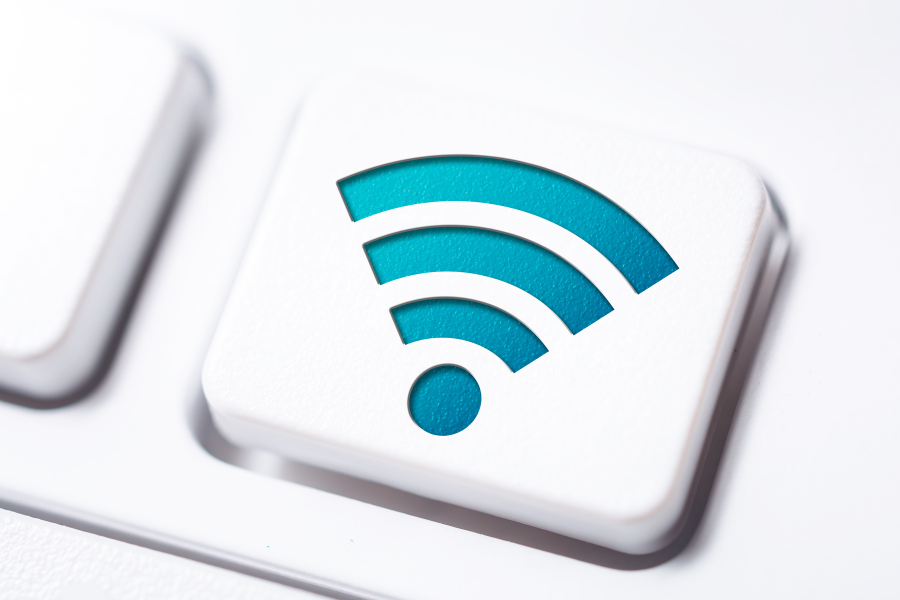HOT OFFER! Save $180 on selected internet plans + get beIN SPORTS CONNECT included!...Use promo code BEIN30 at checkout! Hurry, limited time only!
When someone talks about wireless networks, they’re probably referring to Wi-Fi. After all, it’s what we use to connect our devices at home and we often look for one if we want to get online while on the go. WLAN does pretty much the same, and like Wi-Fi, it’s all around us. So what exactly is WLAN and how does it differ from Wi-Fi? Let’s explore these two technologies.
What is wireless technology?
As the name implies, wireless technology is a type of technology that allows the transfer of information between two or more devices without using physical wires or cables. The most common wireless technologies use radio waves to get the job done.
What is WLAN?
WLAN, or wireless local area network (sometimes called wireless LAN), links two or more devices over a few hundred feet, through an internal computer network without needing to be wired together.
While wired LAN uses physical cables, WLAN uses high-frequency radio waves to form a local area network—no need for Ethernet cables or dial-up modems. With it, you can stay connected while moving around a limited coverage area like your home or office.
How does WLAN work?
Instead of cables hooked directly onto the computer, WLAN uses access points to connect other wireless devices to the internet. It then uses radio technology to transmit digital signals from the LAN to other devices.
Most WLANs are based on the IEEE 802.11 standards, which is what’s commonly referred to as Wi-Fi. Devices within a WLAN use Wi-Fi to communicate digitally. However, WLAN can use other protocols, too, not just Wi-Fi.
What is LAN?
LAN (local area network) is any network of connected devices in a physical location. Examples include those in homes, cafes, office buildings and universities.
For context, there are other types of LANs, such as a wide area network (WAN) and a metropolitan area network (MAN)—both of which cover larger geographic areas, and can, in fact, link LANs together. A personal area network (PAN) covers a smaller area.

What is Wi-Fi?
As we learned earlier, Wi-Fi, or Wireless Fidelity, is a wireless protocol that uses the 802.11 standards set up by the IEEE (Institute of Electrical and Electronics Engineers). It’s actually a brand of wireless network communication technology owned by the Wi-Fi Alliance, an international not-for-profit organisation that promotes wireless technologies and interoperability.
Wi-Fi has enabled users to connect not only computers and smartphones but also smart home devices.
The Wi-Fi Alliance certifies wireless brand devices compliant to the IEEE 802.11 standards. By passing the rigorous testing, these products will be allowed to use the Wi-Fi trademark logo. So when users see the logo on a device, that means it’s compatible with other Wi-Fi branded products. Note, however, that certification isn’t mandatory.
The IEEE maintains other standards as well, with 802 defining how LANs work. The 802.11 standard is dedicated to wireless local area networks. Other standards that fall under the 802 wireless local area networking specifications include 802.3 (ethernet) and 802.15 (bluetooth). Bluetooth also uses radio signals to exchange data, but as you may know, it has a smaller range. It links nearby devices (i.e., smartphone to smartphone) and can therefore be used not only in wireless LANs but also in wireless PANs.
Over the years, the 802.11 standard has seen many different evolutions, and each version is made to work seamlessly with 802.3 ethernet—considering Wi-Fi typically extends the edge of LAN. These standards work in varying frequencies and feature sets.
With all this jargon, the term Wi-Fi was born. You can think of Wi-Fi networks as a type of wireless LAN that directly serves human ‘clients,’ through their devices.
How does Wi-Fi work?
To get wireless high-speed internet and network connections, user devices connect to Wi-Fi. Here’s how it works in simple terms:
- With Wi-Fi connectivity, devices use radio waves to encode digital data and transmit it over to the Wi-Fi router.
- The Wi-Fi router decodes the digital data and sends it over the wireless network and into the user devices.
WLAN vs. WiFi
- WLAN stands for wireless local area network while Wi-Fi stands for wireless fidelity.
- Both WLAN and Wi-Fi are forms of wireless networking technology, and therefore don’t require you to install wired connections.
- WLAN uses wireless communication to connect client devices. Wi-Fi, a trademark owned by Wi-Fi Alliance, is included in WLAN technology.
While both WLAN and WiFi allow devices to connect wirelessly, WiFi is the most widely used and recognised term for wireless networking technology. Ultimately, whether you use the term WLAN or WiFi, the important thing is that you can connect your devices wirelessly and enjoy the convenience and flexibility it provides.


